The Bourtrees, or Elder Trees, which once grew here are recalled by the name of this pub and the street it is in. The building is the former Conservative Club. The foundation stone was laid on 16 October 1897, by Margaret, Countess of Dalkeith, using a silver trowel. Her husband, the Earl of Dalkeith, also attended the ceremony. The half-acre site had been purchased from his father, the Duke of Buccleuch.
A plaque documenting the history of The Bourtree.
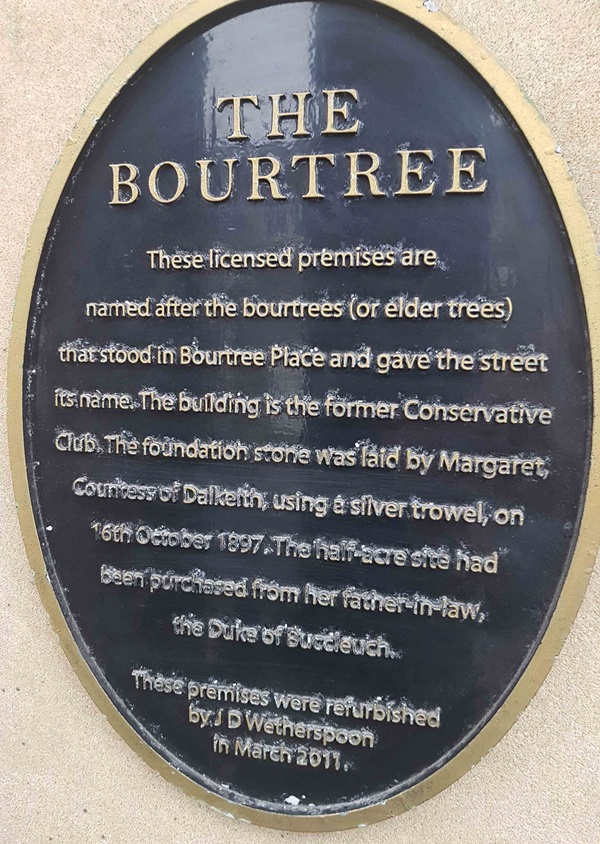
The plaque reads: These licensed premises are named after the Bourtrees (or Elder trees) that stood in Bourtree Place and gave the street its name. The building is the former Conservative Club. The foundation stone was laid by Margaret, Countess of Dalkeith, using a silver trowel, on 16 October 1897. The half-acre site had been purchased from her father-in-law, the Duke of Buccleuch.
These premises were refurbished by J D Wetherspoon in March 2011.
A photograph and text about The Bourtree.
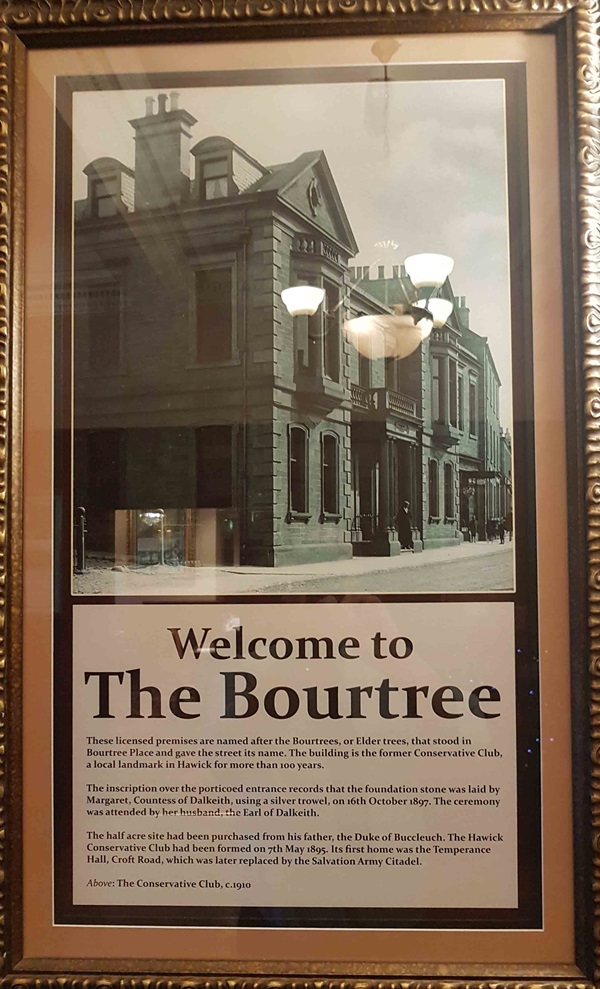
The text reads: These licensed premises are named after the Bourtrees, or Elder trees, that stood in Bourtree Place and gave the street its name. The building is the former Conservative Club, a local landmark in Hawick for more than 100 years.
The inscription over the porticoed entrance records that the foundation stone was laid by Margaret, Countess of Dalkeith, using a silver trowel, on 16 October 1897. The ceremony was attended by her husband, the Earl of Dalkeith.
The half-acre site had been purchased from his father, the Duke of Buccleuch. The Hawick Conservative Club had been formed on 7 May 1895. Its first home was the Temperance Hall, Croft Road, which was later replaced by the Salvation Army Citadel.
Above: The Conservative Club, c1910.
Photographs and text about William McLaren.
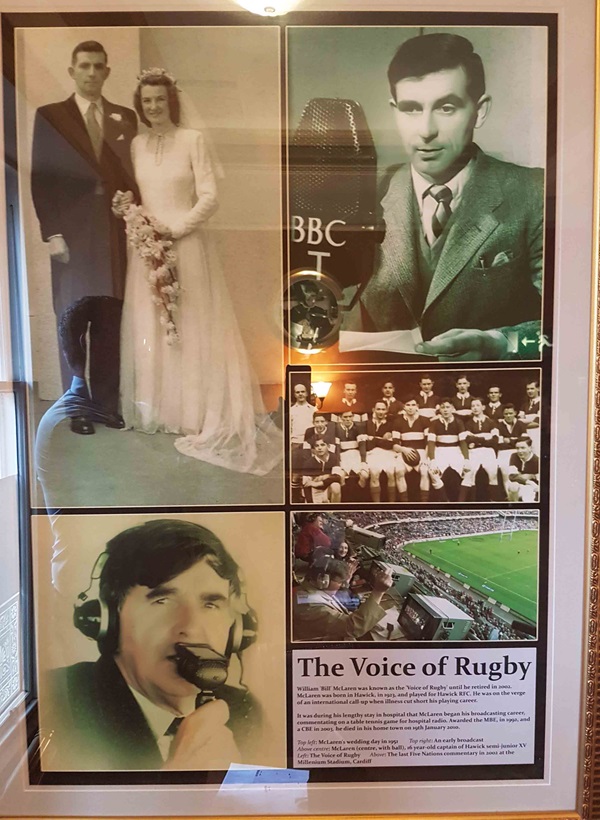
The text reads: William ‘Bill’ McLaren was known as the ‘voice of Rugby’ until he retired in 2002. McLaren was born in Hawick, in 1923, and played for Hawick RFC. He was on the verge of an international call-up when illness cut short his playing career.
It was during his lengthy stay in hospital that McLaren began his broadcasting career, commentating on a table tennis game for hospital radio. Awarded the MBE, in 1992, and a CBE in 2003, he died in his home town on 19 January 2010.
Top left: McLaren’s wedding day in 1951
Top right: An early broadcast
Above centre: McLaren (centre, with ball), 16 year old captain of Hawick semi-junior XV
Left: The voice of Rugby
Above: The last Six Nations commentary in 2002 at the Millennium Stadium, Cardiff.
Photographs and text about Hawick’s memorial statue.
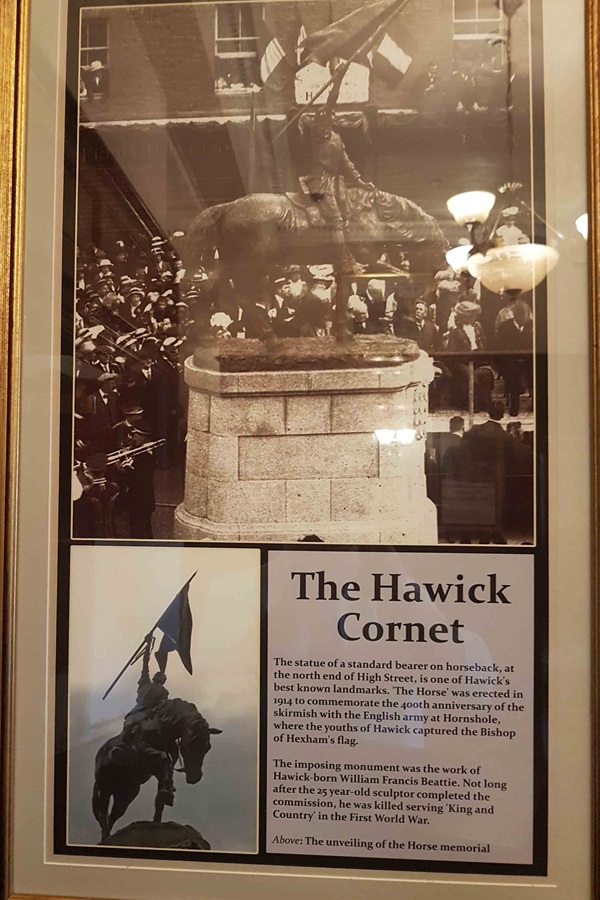
The text reads: The statue of a standard bearer on horseback, at the north end of High Street, is one of Hawick’s best known landmarks. ‘The Horse’ was erected in 1914 to commemorate the 400th anniversary of the skirmish with the English army at Hornshole, where the youths of Hawick captured the Bishop of Hexham’s flag.
The imposing monument was the work of Hawick-born William Francis Beattie. Not long after the 25 year old sculptor completed the commission, he was killed serving ‘King and Country’ in the First World War.
Above: The unveiling of the Horse memorial.
A photograph of the Countess of Dalkeith laying the foundation stone of the Conservative Club, 16 October, 1897.
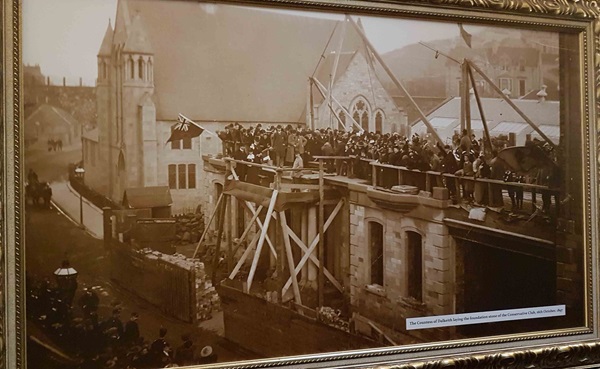
Photographs and text about Steve Hislop.
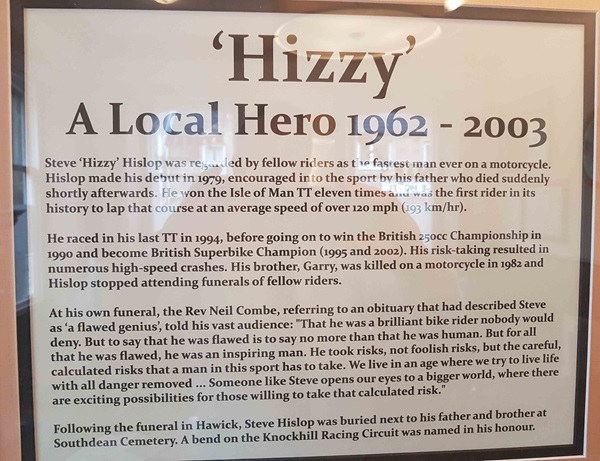
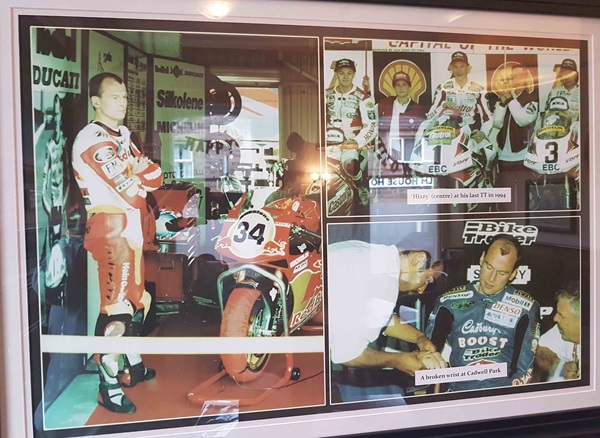
The text reads: Steve ‘Hizzy’ Hislop was regarded by fellow riders as the fastest man ever on a motorcycle. Hislop made his debut in 1979, encouraged into the sport by his father who died suddenly shortly afterwards. He won the Isle of Man TT eleven times and was the first rider in its history to lap that course at an average speed of over 120mph (193km/hr).
He raced in his last TT in 1994, before going on to win the British 250cc Championship in 1990 and become British Superbike Champion (1995 and 2002). His risk-taking resulted in numerous high-speed crashes. His brother, Garry, was killed on a motorcycle in 1982 and Hislop stopped attending funerals of fellow riders.
At his own funeral, the Rev Neil Combe, referring to an obituary that had described Steve as “a flawed genius”, told his vast audience: “That he was a brilliant bike rider nobody would deny. But to say that he was flawed is to say no more than that he was human. But for all that he was flawed, he was an inspiring man. He took risks, not foolish risks, but the careful, calculated risks that a man in this sport has to take. We live in age where we try to live life with all danger removed… Someone like Steve opens our eyes to a bigger world, where there are exciting possibilities for those willing to take that calculated risk”.
Following the funeral in Hawick, Steve Hislop was buried next to his father and brother at Southdean Cemetery. A bend on the Knockhill Racing Circuit was named in his honour.
An oil painting entitled The Standard Bearer, by Stef Gardiner and Nichol Wheatley.
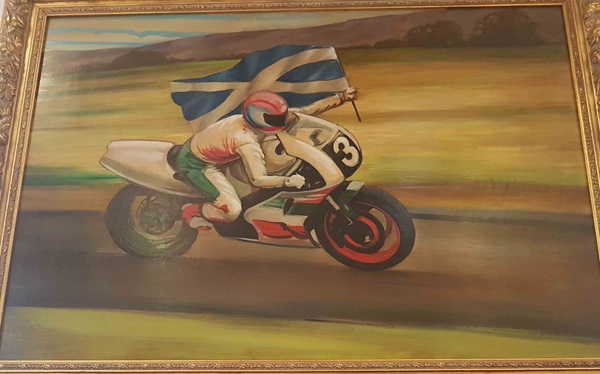
External photograph of the building – main entrance.
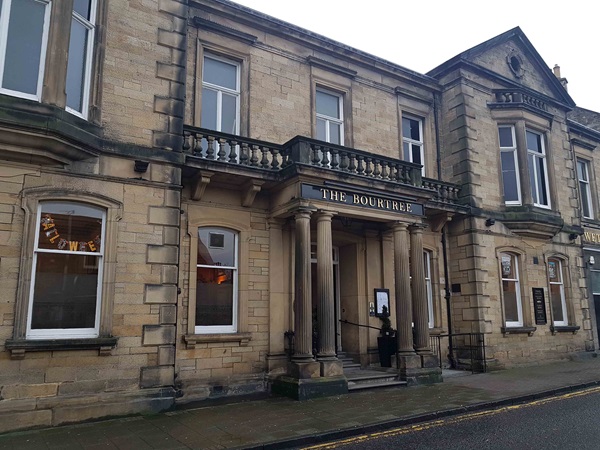
If you have information on the history of this pub, then we’d like you to share it with us. Please e-mail all information to: pubhistories@jdwetherspoon.co.uk